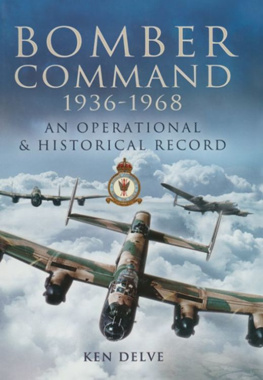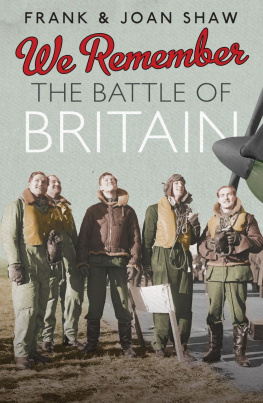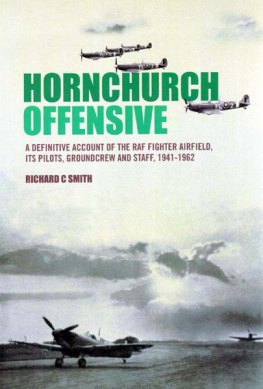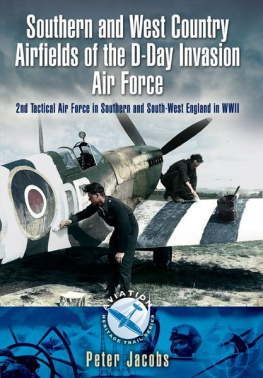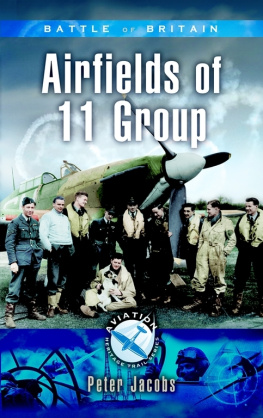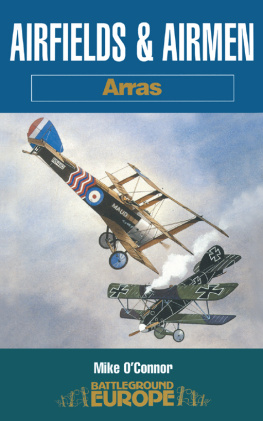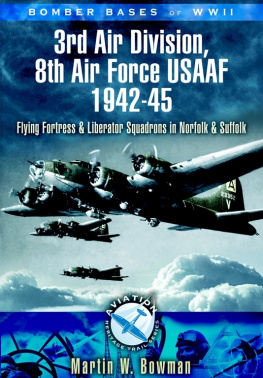This series of books examines Britains military airfields region by region, covering military aviation from World War One to the present day. There have been two main periods of airfield construction World War One, when a large number of landing grounds and aerodromes were built for either defensive purposes or training, the majority of offensive operations taking place from airfields in France, and World War Two, when some parts of England housed hundreds of airfields, many of which were taking the war to the enemy on a daily basis. The highpoint of airfields in terms of numbers came in the latter months of 1944, when Britain housed some 1,000 airfields and over 30,000 aircraft, plus a significant number of small or temporary landing strips.
This series is not a detailed history of every airfield but rather a user-friendly reference, which, for each airfield, comprises an outline history along with maps, plans, photographs and data tables containing information such as location, units and memorials. Commercial publishing realities mean that even the entries for major airfields have had to be restricted in size and all airfields and landing strips that had no recorded military usage have been excluded.
Note on Sources
It is a well-established misunderstanding that military records are precise, comprehensive and accurate; sadly this is far from the truth and the problemsinherent in first locating and then checking documents are not for the faint-hearted researcher. In addressing the history of airfields in the UK, there searcher has a variety of primary sources to consult; for the RAF the most in-depth, at least potentially, is the F540 Operational Record Book (ORB), a series of records now classified in the AIR 28 series by the National Archives at Kew, London. There are, however, two problems with this document: firstly, only RAF Stations, i.e. independent locations with a station headquarters, were required to compile and submit this monthly record, and that parameter removed many of the wartime airfields and landing grounds; secondly, the quality of record is very variable. There searcher is invariably frustrated by the way in which such records were kept; the compiling officer was following Air Ministry guidelines, but these took no account of the desires and interests of future historians! An airfield could, for example, have gone from a grass surface to a concrete runway with no mention at all in its ORB, and when you consider more minor building works the chances of a mention are even slimmer. Movements in and out of units may or may not be recorded even if mention is made there is no guarantee that the date given is accurate. This might sound strange, however it has to be remembered that these monthly ORBs were not compiled on a daily basis but were invariably put together in retrospect at best days after the end of the recorded month but perhaps weeks later.
I spent much of my RAF career compiling ORBs at squadron and station level as a secondary duty that had to be fitted around my primary aircrew task and the problems of pulling together information in retrospect, especially from units or individuals that were either too busy or disinterested was a major struggle. The net result was a submission that would get past the signatory (squadron or station commander) and satisfy both the higher command that saw it and the final recipients at Air Ministry/MoD. Because such records were sent via higher commands there was also an element of politics in their content, as few commanders would submit a warts and all record that might ruffle feathers further up the chain. However, even with these constraints and problems, the ORB remains the core historical document at all levels of the RAF organization. To put any appreciable level of detail into the overall research of an airfield requires reference to the ORBs of the based units, those for the flying units being particularly helpful but with the same set of difficulties outlined above. Squadron ORBs are contained in the AIR 27 series. Other unit records, flying and ground, can also be consulted and, indeed, for some airfields, especially major training units, the unit record is essentially the station record.
The SD161 location on units record is an excellent source for unit listings at a particular location for a given month. There is one major drawback, in that it is compiled from other inputs that may not, in them selves, be accurate or up to date; for example, the SD161 might list the presence of a particular squadron or other unit in its monthly entry for an airfield but, in fact, the move of that unit, whilst planned and authorized, might not have taken place or might have occurred at a slightly different time. It is a similar picture with the Secret Organizational Memoranda (SOM) files: these documents were the authorization for units to form, move, change command-allegiance, change name, disband, and so on, and as such they can prove very useful as long as they are used with care. A planned and authorized action might subsequently be modified or cancelled and the researcher might not have picked up the amendment. An example of this, in respect to airfields, is the authorization under SOM 79/40 (dated30 January 1940) for the requisitioning of land at Bysshe Court, Surrey as a RLG for Redhill, the site is212miles West of Lingfield. Two months later, however, SOM 194/40 (dated 11 March) stated Red hill is to use Penshurst as an RLG and the site at Bysshe Court is not required.
For Royal Navy/Fleet Air Arm units the official record system is the Ships Log, which applies to shore sites as well as floating vessels, and these documents can be even more frustrating, as they vary from diary format, often excellent and including photographs, to minimal factual statements that are of little use.
The USAAF units also submitted regular official reports and, as one airfield usually only housed a single Group, the records of that Group can provide some useful details, although they are primarily concerned with operations and not infrastructure.
It would, of course, be impossible to refer to everyone of these sources when compiling a series of books such as the Crowood Military Airfields in Britainseries and the author freely acknowledges his debt to other researchers who have ploughed this field and produced excellent reference works. A great many of these secondary sources (a term that is no insult to these authors) have been used during the compilation of the Crowood series and a selection of the major ones is given below:
Halley, James J, The Squadrons of the Royal Air Force and Commonwealth (Air Britain)
Jefford, C G, RAF Squadrons (Airlife)
Sturtivant, Ray; Hamlin, John; Halley, James J, RAF Flying Training and Support Units (Air Britain)
Lake, Alan, Flying Units of the RAF (Airlife)
Sturtivant, Ray; Page, Gordon, Royal Navy Aircraft, Serials and Units (Air Britain)
Airfield Review , Airfield Research Group magazine (see below)
Freeman, Roger, The Mighty Eighth (Arms and Armour Press) the impressive series of books by Roger on the 8th Air Force
Plus the authors own published works such as, The Source Book of the RAF (Airlife)
All good historians will confess that everything that appears in print contains errors; some of these are errors repeated from primary or secondary sources, some are typological (1942 and 1943 are a mere key-stroke apart) and some are simply omissions where the author has not been able to fill in the gap or has completely missed a document. All of these errors will be found in this series I would welcome feed-back so that any future updates can be more accurate and complete.


